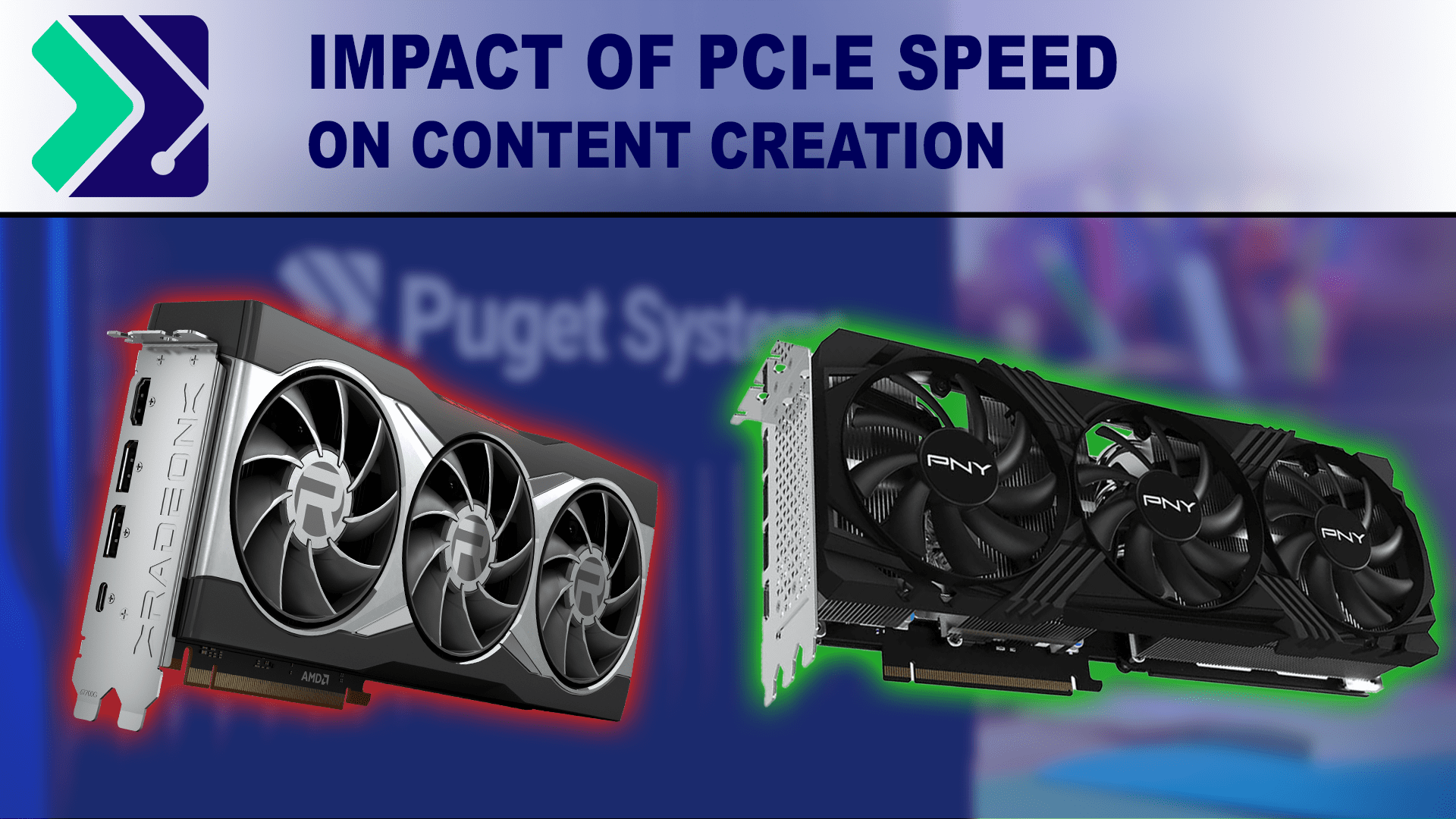Installing add-in cards—like capture cards—can limit PCI-e bandwidth to the GPU. Does the reduction of PCI-e bandwidth harm performance in content-creation?


Installing add-in cards—like capture cards—can limit PCI-e bandwidth to the GPU. Does the reduction of PCI-e bandwidth harm performance in content-creation?

PCI-Express has been the standard for connecting video cards and other expansion devices inside of computers for many years now, and several generations of the technology have now passed. With each of those generations, the amount of data that can be transferred over the PCIe connection has increased. How much impact does that have on modern video cards? Is there any benefit to running a PCIe 3.0 card in a 4.0 slot, or loss if using a 4.0 card in a 3.0 slot?

GPU based renderers like OctaneRender and Redshift make use of the video cards in a computer to process ray tracing and other calculations in order to create photo-realistic images and videos. The performance of an individual video card, or GPU, is known to impact rendering speed – as is the number of video cards installed in a single computer. But what about the connection between each video card and the rest of the system? This interconnect is called PCI Express and comes in a variety of speeds. In this article, we will look at how benchmarks for these programs perform across PCI-E 3.0 and 2.0 with x1, x4, x8, and x16 lanes.

PhotoScan makes use of the video cards in a computer to assist with the computation of certain steps. The performance of an individual video card, or GPU, is known to impact the processing speed – but what about the connection between the video card and the rest of the computer? This interconnect is called PCI Express and comes in a variety of speeds. In this article, we will look at how PhotoScan performance scales across PCI-E 3.0 x4, x8, and x16.

Benchmark results demonstrating that PCI-Express x8 vs x16 speeds don’t impact GPU rendering performance.

Many hardware sites have shown in the past that video cards do not show any performance decrease by running in x8 mode and cannot utilize the larger bandwidth provided by the latest Gen3 specification. However, video cards are getting faster and faster so we felt it this is still true. Also, with the gaining popularity of 4k displays, we also felt it was important to see if the PCI-E revision/speed would affect a video card’s performance at the much more demanding 4k resolution.